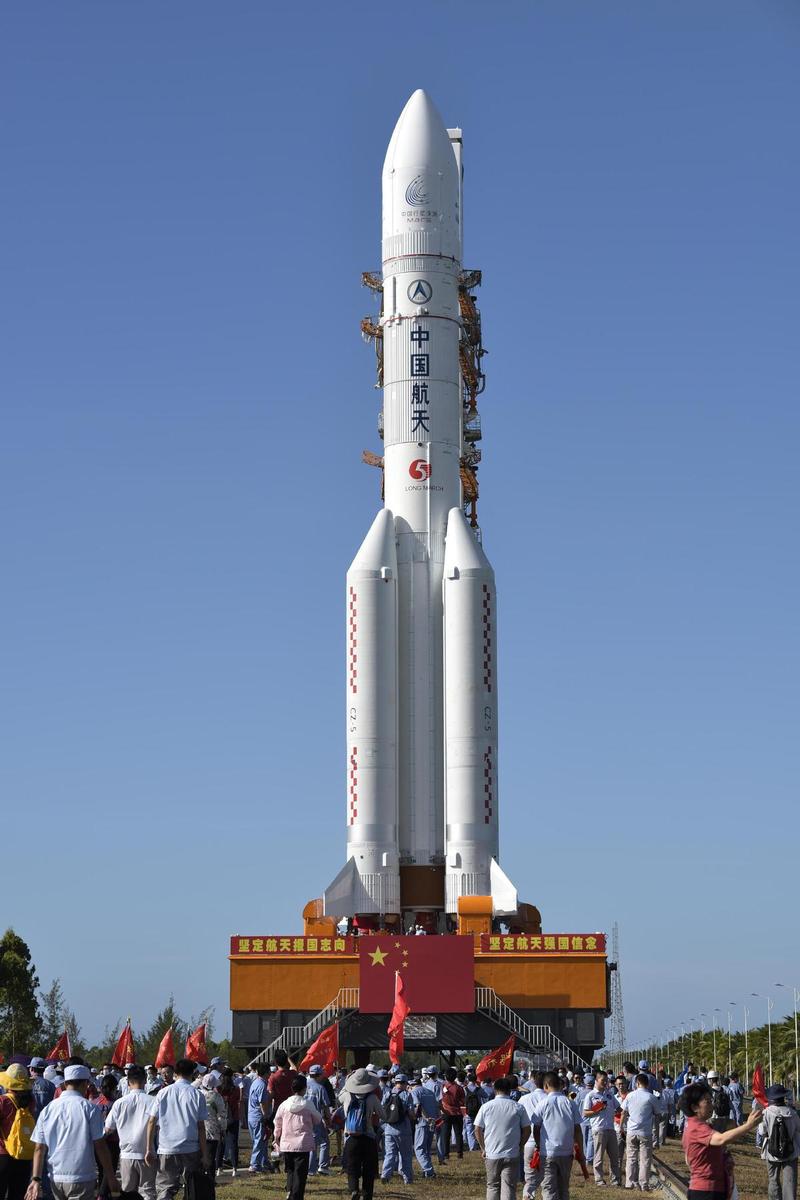



The China National Space Administration unveiled on Wednesday details of the nation's first Mars rover, which will be part of the country's first independent Mars mission Tianwen 1.
The rover, which has yet to be named, is 1.85 meters tall and weighs about 240 kilograms. It has six wheels and four solar panels and will be able to move at 200 meters per hour on Mars, the administration's Lunar Exploration and Space Program Center revealed at an unveiling ceremony in Wenchang, a coastal city on the island province of Hainan.
Developed by the China Academy of Space Technology in Beijing, a major manufacturer of Chinese spacecraft, the rover carries six scientific instruments including a multispectral camera, subsurface penetrating radar and a meteorological measuring device. It will use the instruments to examine Mars' surface compositions, geological structures, climate and environment.
The vehicle is expected to operate for about three months on the planet. If the highly autonomous machine works well, it will become the world's fifth operational Mars rover, following the previous four from the United States.

Long March 5 carrier rocket arrives at its launch pad to lift China's Tianwen 1 Mars probe at the Wenchang Space Launch Center in the southern island province of Hainan, July 17, 2020. [Photo/Xinhua]
Tianwen 1 will soon be launched on its Mars mission carried by a Long March 5 rocket from the Wenchang Space Launch Center.
Depending on the two planets' orbits, Mars is 55 million km to 400 million km from Earth. It is estimated it will take the probe seven months to reach Mars.
Once the probe is in Mars' orbit, the rover will separate from the probe and descend to the planet's surface with the assistance of an landing module.
If Tianwen 1 can fulfill its three scientific objectives-orbiting Mars for comprehensive observation; landing on the planet's surface; and exploring Mars' environment, it will become the world's first Mars expedition to accomplish three such goals in one probe.
Meaning "quest for heavenly truth" in Chinese, Tianwen is named after a poem by the famed poet Qu Yuan of the Kingdom of Chu during the Warring States Period (475-221 BC).
Naming the mission after the poem was intended to demonstrate the Chinese nation's determination to explore deep space and to instill a love of science in young people, the space administration said.
